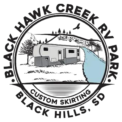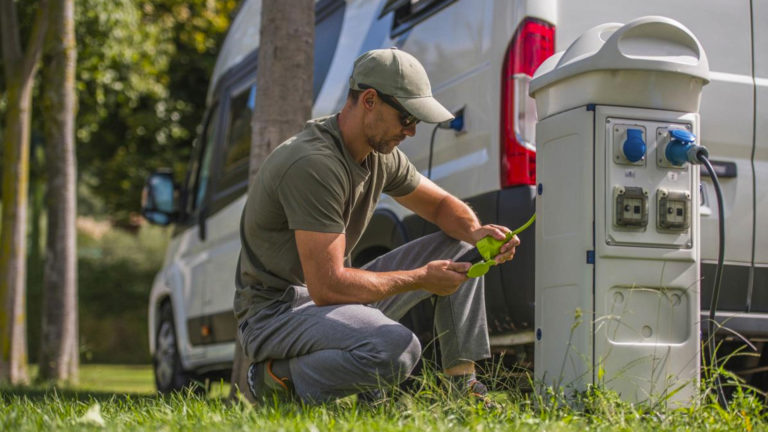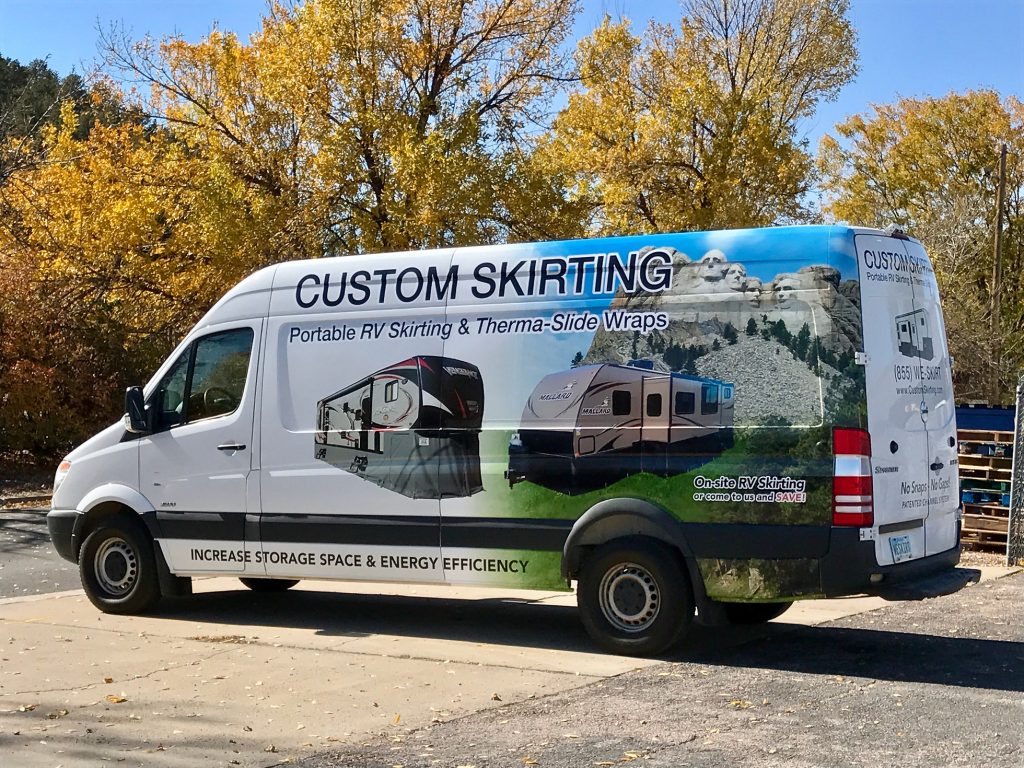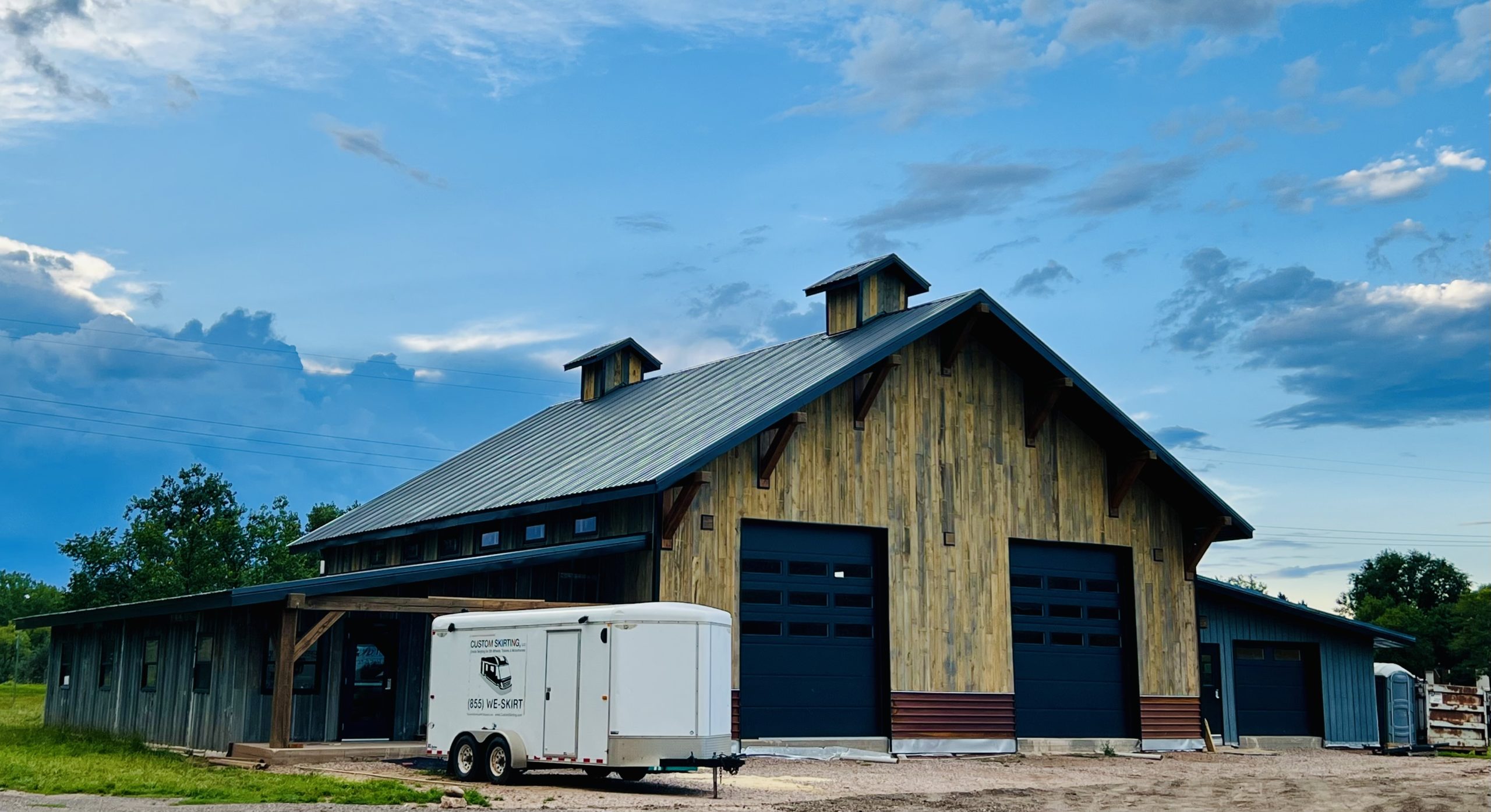Table of contents
If you’re an avid camper or road trip enthusiast, chances are you’re no stranger to the world of RV full hookups. These connections are essential for ensuring your RV functions properly while on the road, whether you’re parked at a campground, in your backyard, or enjoying a remote boondocking adventure. In this comprehensive guide, we’ll cover everything you need to know about RV hook ups (water, TV, sewer, and electrical RV hookup) from what they are to how to install them.
What is an RV Hookup?
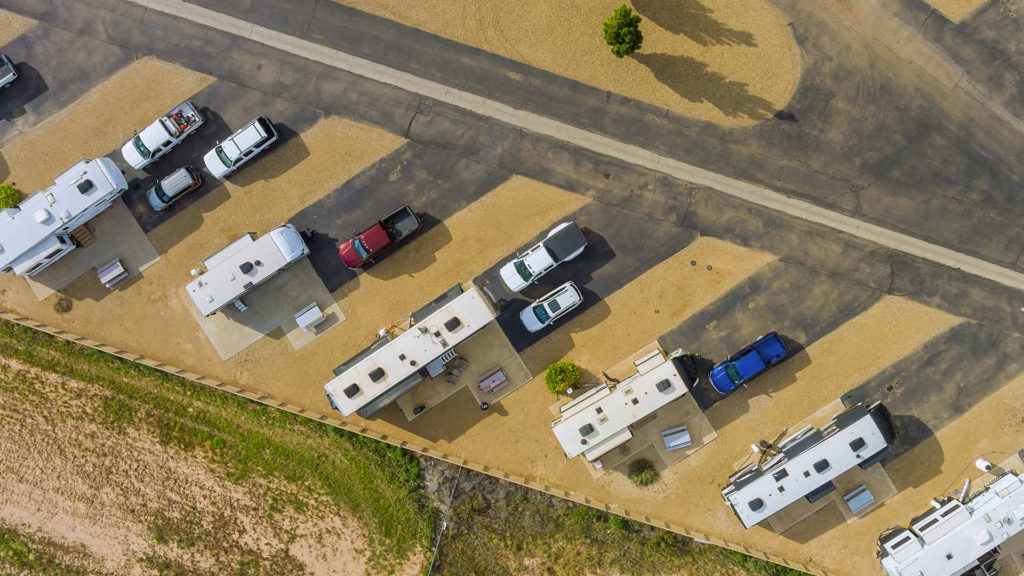
An RV full hookup is a set of connections that provide essential services to your recreational vehicle. These connections typically include:
1. RV Electric Hookup
An RV electric hookup, often referred to as a shore power connection, provides electricity to your RV. This connection allows you to run your appliances, charge your devices, and power your HVAC system. RVs can use either a 30-amp or 50-amp electrical hookup, depending on their size and power requirements.
2. RV Water Hookups
RV water hookups provide a supply of fresh water to your vehicle. This connection allows you to have running water for cooking, cleaning, and showering, making your RV feel more like a home on wheels. Some campgrounds also offer water hookups for filling your RV’s freshwater tank.
3. RV Sewer Hookup
An RV sewer hookup is essential for disposing of wastewater from your RV. It connects your vehicle’s waste tank to the campground’s sewer system, allowing you to empty your tanks without having to move your RV. Properly connecting to a sewer hookup ensures a clean and convenient camping experience.
4. RV Cable TV Hookups
RV cable TV hookups provide access to cable television services while you’re parked at a campground. These hookups allow you to stay connected to your favorite shows and channels, ensuring you don’t miss out on your favorite entertainment during your travels.
Installing RV Hookups on Land
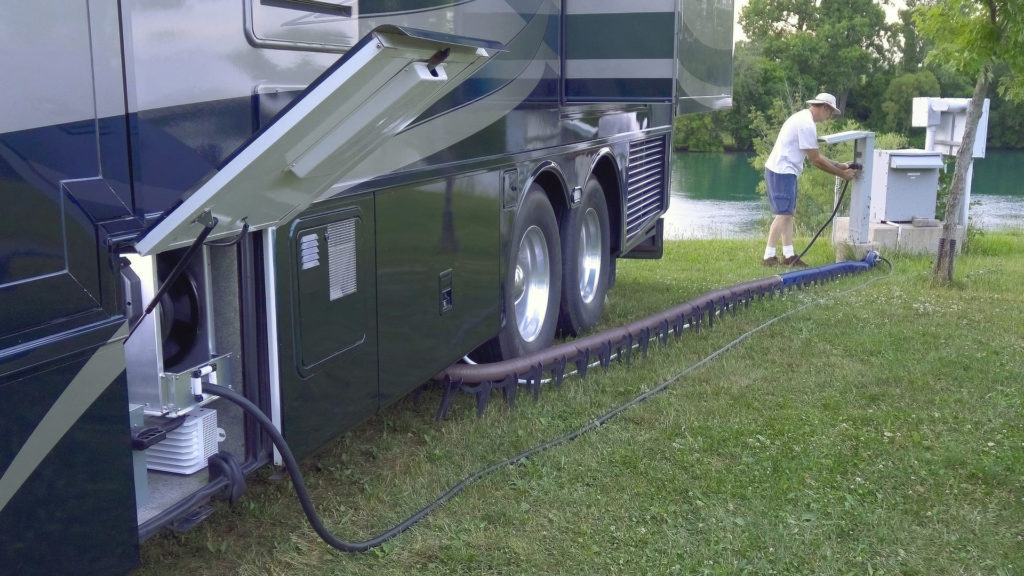
If you’re a homeowner and want to install RV hook ups on your property, there are a few steps to follow. The cost of installing RV hookups can vary depending on several factors, including the level of DIY work you’re willing to do, your RV’s amperage requirements, the sewer system type, and the distance from your house to the hookup location.
1. Create a Parking Pad
The first step in installing RV hookups on your land is to create a suitable parking pad. This pad should provide a level surface capable of supporting the weight of your RV, even in wet conditions. You can use gravel or cement for this purpose, and it should be at least 4 feet wide and long enough to comfortably accommodate your RV.
2. Install a Post
Next, you’ll need to install a post to secure the electrical hookup. Dig a hole about 8 inches wide and 30 inches deep, then place a 4’x4′ post into the hole and pour concrete around it to hold it in place. This post will serve as the anchor for your RV’s electrical connection.
3. Put In Your Water Hookup
Installing a water hookup requires you to contact utility companies before digging in your yard. This is crucial to avoid damaging gas, water, or power lines, which could result in costly repairs or even safety hazards. Once you’ve ensured that it’s safe to proceed, you can install the water connection.
4. Turn to the Electricity
The electrical hookup is a crucial part of your RV setup. You must determine whether your RV requires a 30-amp or 50-amp connection. The plug heads for these cables have different prong layouts, so make sure you select the right one. If you’re not experienced with electrical work, it’s recommended to call an electrician for this installation.
5. Finish with Sewer
In some cases, you may not need to install a sewer hookup at all. If your home is connected to a public sewer system, you likely have a cleanout in your yard. If it’s legal in your area, you can remove the cleanout cap and connect your RV’s sewer hose directly to it. This convenient option eliminates the need for a separate sewer hookup installation.
Installing RV Hookups at Home
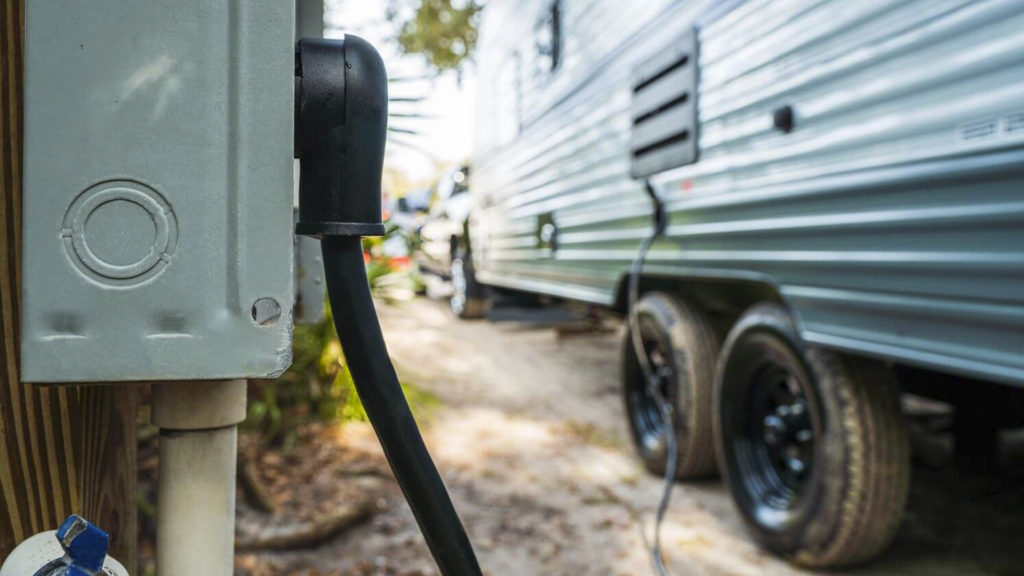
Now, let’s dive deeper into the step-by-step process of installing RV hook ups at your home:
1. Create a Parking Pad
The first step in installing RV hookups at home is to create a suitable parking pad. This pad should provide a level surface capable of supporting the weight of your RV, even in wet conditions. You can use gravel or cement for this purpose, and it should be at least 4 feet wide and long enough to comfortably accommodate your RV.
2. Install a Post
Next, you’ll need to install a post to secure the electrical hookup. Dig a hole about 8 inches wide and 30 inches deep, then place a 4’x4′ post into the hole and pour concrete around it to hold it in place. This post will serve as the anchor for your RV’s electrical connection.
3. Put In Your Water Hookup
Installing a water hookup requires you to contact utility companies before digging in your yard. This is crucial to avoid damaging gas, water, or power lines, which could result in costly repairs or even safety hazards. Once you’ve ensured that it’s safe to proceed, you can install the water connection.
4. Turn to the Electricity
The electrical hook ups are a crucial part of your RV setup. You must determine whether your RV requires a 30-amp or 50-amp connection. The plug heads for these cables have different prong layouts, so make sure you select the right one. If you’re not experienced with electrical work, it’s recommended to call an electrician for this installation.
5. Finish with Sewer
In some cases, you may not need to install a sewer hookup at all. If your home is connected to a public sewer system, you likely have a cleanout in your yard. If it’s legal in your area, you can remove the cleanout cap and connect your RV’s sewer hose directly to it. This convenient option eliminates the need for a separate sewer hookup installation.
Looking for an RV Park to Stay in During Your Trip?
Now that you have a full understanding of RV hookups, you’re ready to start planning your next RV adventure. If you’re looking for a fantastic RV park to stay at during your trip, consider Black Hawk Creek.
Whether you’re seeking tranquility among the breathtaking landscapes of South Dakota or a thrilling exploration of the area’s diverse attractions, Black Hawk Creek ensures that your journey is nothing short of extraordinary. Book your stay today and let the adventure begin!
